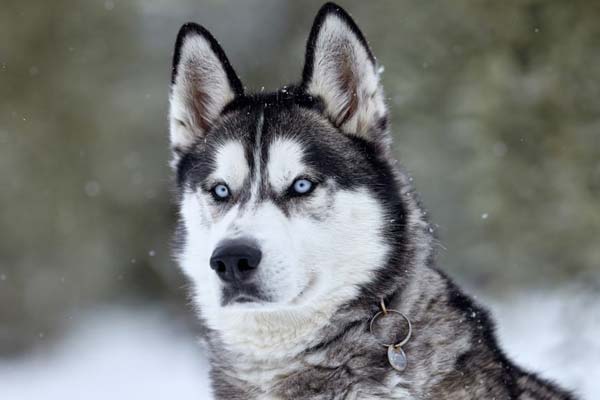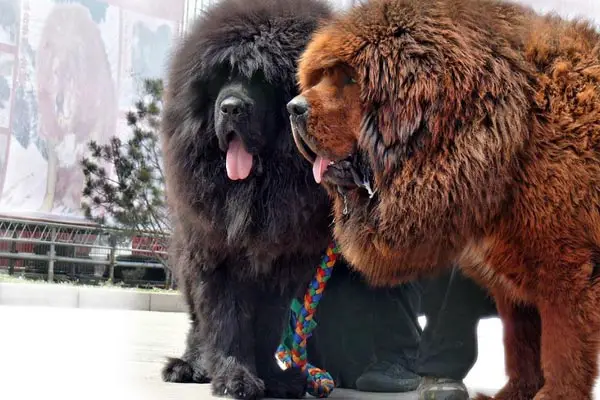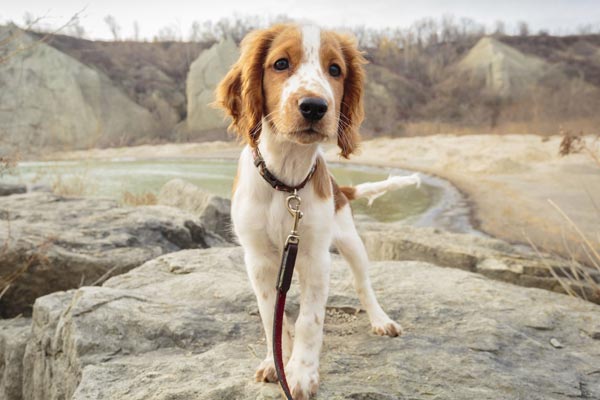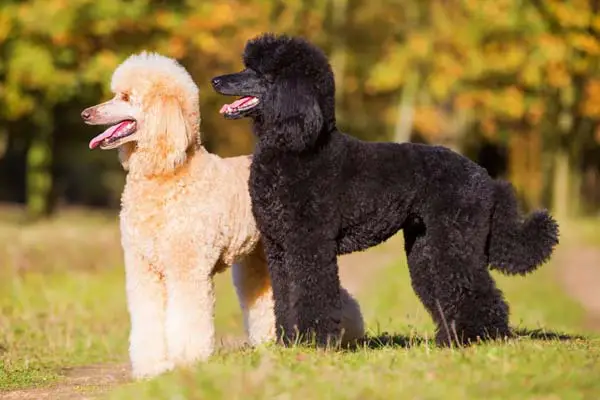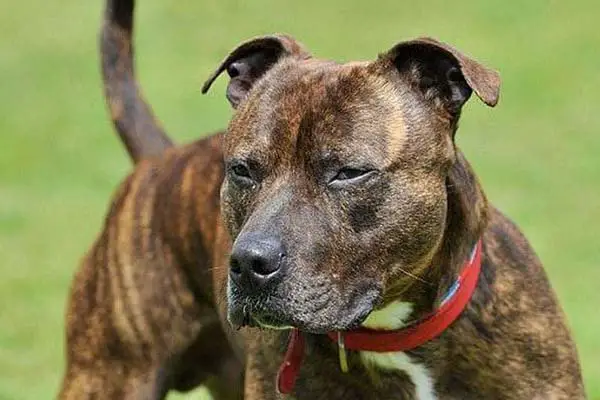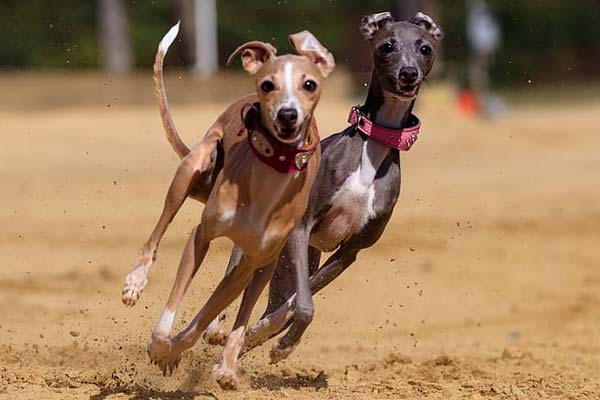Siberian Husky: Discover the Secrets Behind Their Striking Blue Eyes
The Siberian Husky is a friendly medium-sized working dog breed from Northeast Asia. Developed by the Chukchi people in Siberia, these lovable dogs were made to pull sleds and be great companions.
They are known for their thickly furred double coat, erect triangular ears, and distinctive markings. Siberian Huskies are friendly, intelligent, and energetic dogs that thrive on human company.
Siberian Huskies have become popular family pets due to their affectionate and playful nature. They are known for their high energy levels and need for exercise, making them an excellent choice for active families.
However, their strong prey drive and independent nature make them challenging to train inexperienced dog owners.
Key Takeaways
- Siberian Huskies are medium-sized working dogs developed by the Chukchi people of Siberia for sled pulling and as a companion.
- They are friendly, intelligent, and energetic dogs requiring much exercise and human company.
- Siberian Huskies make great family pets but require firm, gentle training from an experienced owner.
Siberian Husky Origins
The Siberian Husky dog breed has been around for thousands of years. Their ancestry and origin can be traced back to the Chukchi people of Siberia, who bred these dogs for sled pulling and transportation.
Siberian Huskies are a member of the spitz and primitive types group, smaller than the similar-looking Alaskan Malamute.
The Chukchi people lived in northeastern Siberia, where the weather and terrain were harsh. They needed sled dogs to withstand cold temperatures and pull heavy loads over long distances.
The Siberian Husky was the perfect breed for this job, with its thickly furred double coat, erect triangular ears, and distinctive markings.
In the early 1900s, Siberian Huskies were introduced to the United States and Alaska. They quickly became popular as sled dogs and were used in the famous Iditarod race.
The American Kennel Club recognized the breed in 1930 as a working group member.
One of the most famous stories about Siberian Huskies is the 1925 diphtheria epidemic in Nome, Alaska. A relay of dog teams, including Siberian Huskies, brought life-saving serum from distant Neana to Nome. The heroic endeavor earned national prominence for the drivers and their dogs.
Nowadays, Siberian Huskies are still used as sled dogs but are also popular as pets. They are known for their friendly and outgoing personalities and are great with children. Siberian Huskies need plenty of exercise and attention but are loyal and loving companions.
Physical Characteristics
Coat
The Siberian Husky has a thick, soft double coat that provides insulation in cold weather. The outer coat is straight and has a smooth texture, while the undercoat is dense and soft.
The coat comes in various colors, including black, white, gray, and red, and can have markings such as piebald or pinto. Some Huskies also have a unique feature known as a “snow nose,” where the nose changes color from black to pink in colder temperatures.
Size and Weight
The Siberian Husky is a medium-sized dog, standing 20-24 inches (51-61 cm) tall at the withers and weighing between 35-60 pounds (16-27 kg). Usually, females are a bit smaller than males, with a height of 21 inches (53 cm) and a weight of 35-50 pounds (16-23 kg).
Unique Features
In addition to their thick, double coat, Siberian Huskies have other unique physical features. They have erect ears, a curled tail, and almond-shaped eyes that can come in various colors, including brown, blue, and particolored.
Siberian Huskies are also known for their endurance and agility, with a lean and muscular build enables them to pull sleds over long distances.
The Siberian Husky is a unique and distinctive breed with a thick, soft coat and lean, muscular build. They are well-suited for cold climates and have special physical features that set them apart from other breeds.
Temperament and Personality
Siberian Huskies are known for their friendly, intelligent, and independent temperament. As a high-energy breed, they need loads of exercise to keep them fit and content.
They can quickly learn new commands and tricks with their intelligence and trainability. However, their independent nature can sometimes make them stubborn and challenging to train.
Socialization is essential for Siberian Huskies to develop friendliness towards other animals and humans. They are friendly and playful, making them a great family pet. However, they have a high prey drive and may not be suitable for households with small pets.
Siberian Huskies are known for their naughty behavior, which can be entertaining and frustrating. They are affectionate dogs that thrive on human company, making them a loyal companion. The affection level of a Siberian Husky depends on the individual dog and may vary.
Overall, Siberian Huskies have a unique temperament that requires an experienced owner who can provide them with the necessary exercise, training, and socialization. With proper care, they can make excellent family pets.
| Trait | Description |
|---|---|
| Energy levels and exercise needs | High-energy breed that requires plenty of exercises |
| Intelligence and trainability | Intelligent and trainable, can be stubborn at times |
| Socialization and friendliness with other animals and humans | Requires socialization to develop friendliness towards other animals and humans |
| Independence and potential for stubbornness | Independent nature can make them stubborn |
| Friendly | Friendly and playful nature |
| Intelligent | Intelligent and quick to learn |
| Independent | Independent and self-reliant |
| Stubborn | Can be stubborn at times |
| High-energy | High energy breed |
| Smart | Smart and quick-witted |
| Mischievous | Known for their mischievous behavior |
| Affectionate | Affectionate and loyal companion |
| Temperament | Unique temperament that requires an experienced owner |
| Playful | Playful and energetic |
| Affection level | Affection level varies depending on the individual dog |
| Friendliness | Generally friendly towards humans, but may have a high prey drive |
Health and Lifespan
Common Health Issues
While Siberian Huskies are usually healthy pups, they can be prone to specific health issues like any other breed. Some common concerns for these dogs include hip dysplasia, cataracts, and diphtheria.
Hip dysplasia is an inherited issue that affects the hip joint, leading to discomfort and movement difficulties. Meanwhile, cataracts create cloudiness in the eye lens, which can cause blindness. Diphtheria, a bacterial infection, may result in respiratory problems and can even be life-threatening if left untreated.
Regular veterinary care for your Siberian Husky is crucial to preventing these and other health issues. This includes vaccinations, regular check-ups, and preventive care like flea and tick control.
Lifespan
Siberian Husky’s average lifespan is 12 to 14 years, but some Huskies can live even longer with proper care. Factors that can affect a Husky’s lifespan include genetics, diet, exercise, and veterinary care. Regular exercise, a healthy diet, and good dental care can all help to extend your Husky’s lifespan.
Escape Artist
Siberian Huskies have a reputation for being skilled escape artists. Their intelligence and independent nature can make training a bit of a challenge. Proper training and supervision are vital to prevent your Husky from escaping and getting into dangerous situations.
Nails and Teeth
Maintaining your Siberian Husky’s overall health with regular nail trimming and dental care is crucial. Lengthy nails can result in pain and discomfort, while dental problems might escalate into more serious health concerns.
Hip Dysplasia
Hip dysplasia is a prevalent health concern in Siberian Huskies. This hereditary condition impacts the hip joint, leading to discomfort and movement difficulties. Ensuring your Husky gets regular exercise and a nutritious diet can help prevent hip dysplasia.
Diphtheria
Siberian Huskies can be susceptible to diphtheria, a bacterial infection. It can cause respiratory issues and even death if left untreated. Regular veterinary care and vaccinations can help to prevent diphtheria in your Husky.
Siberian Huskies tend to be healthy dogs overall; however, as with all breeds, they may be susceptible to specific health issues. Regular veterinary care, a healthy diet, and proper exercise can help to prevent these health issues and extend your Husky’s lifespan.
Grooming and Maintenance
Grooming
Siberian Huskies have a fluffy double coat that needs frequent brushing to keep it looking nice and clean. They shed their undercoat twice yearly, meaning they need more attention during these periods.
The following are some grooming tips for Siberian Huskies:
- Brush their coat at least once a week with a wide-toothed comb and a paddle brush to remove tangles and mats.
- Use an undercoat rake to remove loose hair from their undercoat during shedding seasons.
- Only give them a bath when needed, and use a gentle dog shampoo to prevent their skin from getting too dry.
- Cut their nails often so they don’t get too long and make them uncomfortable.
- Wipe their ears with a wet cloth to clean out dirt and wax, and look for any signs of infection.
- Use a dog toothbrush and toothpaste to clean their teeth and avoid dental issues.
Diet
A good diet is vital to keep your Siberian Husky’s coat and health in shape. Here are some helpful tips:
- Give them nutritious dog food with lots of protein and vitamins.
- Don’t feed them too much to avoid weight gain and health issues.
- Make sure they have lots of clean water to drink.
- Try adding some fish oil or vitamin E to their food! It could help keep their skin and coat looking fabulous!
Training and Exercise
Training
Training a Siberian Husky is essential for a happy and healthy relationship between the dog and its owner. Effective training requires patience, consistency, and positive reinforcement. It is recommended to start training a Siberian Husky puppy at eight weeks old.
Socialization is crucial during this stage, and owners are advised to expose their puppies to different environments, sounds, and people.
One of the common behavioral challenges owners face with Siberian Huskies is their strong-willed nature.
They are intelligent dogs with a high prey drive, making training challenging. However, with patience and consistency, owners can train their Huskies to follow basic commands such as sit, stay, come, and heel.
Owners should train their Huskies to walk on a leash and to come when called to prevent escape attempts. Don’t forget to entertain them with puzzle toys and fun games! It’s a great way to keep their minds busy and avoid boredom-related problems.
Exercise
Siberian Huskies are active pups that love to work! Make sure to give them plenty of exercise to keep them physically and mentally fit.
Owners should aim to provide at least one hour of exercise daily, but more is always better. Exercise options include hiking, running, and dog sports such as agility, canicross, and skiing.
Owners should ensure that their Huskies are gradually trained to exercise for extended periods to prevent injuries. Monitoring their hydration levels during exercise, especially in hot weather, is also essential.
Sled dog racing is a popular sport for Siberian Huskies, rooted in their history as a breed. During World War II, they were used as cargo dogs in Arctic search and rescue missions and as cargo dogs. Today, the Iditarod Trail Sled Dog Race is a famous sled dog race in Alaska.
Training and exercise are crucial for the health and happiness of a Siberian Husky. Effective training requires patience and consistency, while exercise options include hiking, running, and dog sports.
Providing mental stimulation through puzzle toys and interactive games can help prevent boredom-related issues.
Siberian Huskies as Family Pets
Siberian Huskies can make great family pets, but there are some things to consider before bringing one into your home. Here are some essential factors to keep in mind:
Compatibility with Children and Other Pets
Huskies are super friendly and outgoing, making them perfect playmates for kids! However, it’s important to supervise interactions between young children and dogs to prevent accidental injuries. Additionally, early socialization and training can help ensure that your Husky gets along well with other pets in the household.
Living Space Requirements
Huskies are active dogs requiring plenty of exercises, so they may not be the best choice for apartment living. A house with a fenced yard is ideal, but if you live in an apartment, you must commit to daily walks and trips to a nearby dog park.
Potential Challenges and Solutions for Families
Huskies can be quite the escape artists and love to explore! Keep them on a leash or in a secure yard to prevent any adventures. And since they have a strong prey drive, keeping them away from small pets like cats and bunnies is best.
Companion
Siberian Huskies are pack animals and thrive on companionship, making excellent family pets. They are affectionate and love spending time with their humans.
Children
Huskies are generally good with children, but it’s crucial to appropriately supervise interactions and teach children how to interact with dogs to prevent accidental injuries.
Other Dogs
Huskies can get along well with other dogs if they are properly socialized from a young age. However, they may not get along with dogs of the same sex, so monitoring their interactions is essential.
Cats
Huskies are well known for their strong prey drive, which means they might see cats as prey. Make sure to keep them separated to avoid any accidents!
Watchdog
While Huskies may look intimidating, they are generally not good watchdogs. They are friendly and outgoing with strangers, so they may not alert you to any potential danger.
Overall, Siberian Huskies can make great family pets if you are willing to commit to their exercise and socialization needs. They can be loyal and affectionate companions with proper training and care for many years.
Adoption and Purchasing
Finding a Responsible Breeder
When looking to purchase a Siberian Husky, it is vital to find a responsible breeder. This means finding a breeder who prioritizes the health and well-being of their dogs over profit.
One way to find a reputable breeder is to research the breeder’s reputation and experience.
Look for breeders registered with reputable organizations, such as the American Kennel Club (AKC) or the Siberian Husky Club of America (SHCA).
Visiting a breeder’s facility and meeting the dogs in person is a great way to find a responsible breeder. You’ll see their living conditions and ensure they’re healthy and happy.
A good breeder should also be open to answering your questions and sharing info about the dog’s lineage and health history.
Adopting a Siberian Husky
If you’re thinking of adding a Siberian Husky to your family, adopting is a fantastic option! Many rescue organizations are committed to finding loving homes for Huskies in need.
These organizations often have dogs of all ages, from puppies to seniors, and they can help you find the perfect furry friend that suits your lifestyle and needs.
When adopting a Siberian Husky, preparing your home for its arrival is essential. This includes ensuring that your home is safe and secure for a new dog, providing them with a comfortable and cozy space to sleep and play, and having the necessary supplies, such as food, water, and toys.
Owning a Siberian Husky can come with varying costs, depending on age, health, and location. Budgeting for food, vet care, and other dog-related expenses is essential.
Whether you buy a Husky from a responsible breeder or adopt from a rescue, do your homework and be ready to offer your new fluffy pal a loving home. Siberian Husky puppies can range from $750 to $2,000; some champion lines might cost up to $4,000.
Conclusion
Siberian Huskies are a distinct dog breed with a fluffy coats, beautiful markings, and striking eyes. They’re playful, friendly, and perfect for families and outdoor activities.
However, research and preparation is crucial before getting a Husky, as they require time, effort, and resources for proper care. They need daily exercise, mental stimulation, and socialization to avoid boredom and destructive behavior.
The Siberian Husky Club of America (SHCA) is an excellent resource for learning about the breed, health concerns, and responsible breeding. Always buy from reputable breeders who prioritize their dogs’ health and well-being.
Siberian Huskies are known for their vocal nature and escaping skills, so a secure yard is essential. If you’re ready to invest time and effort, they make fantastic companions with unique personalities and stunning looks that will win your heart.
